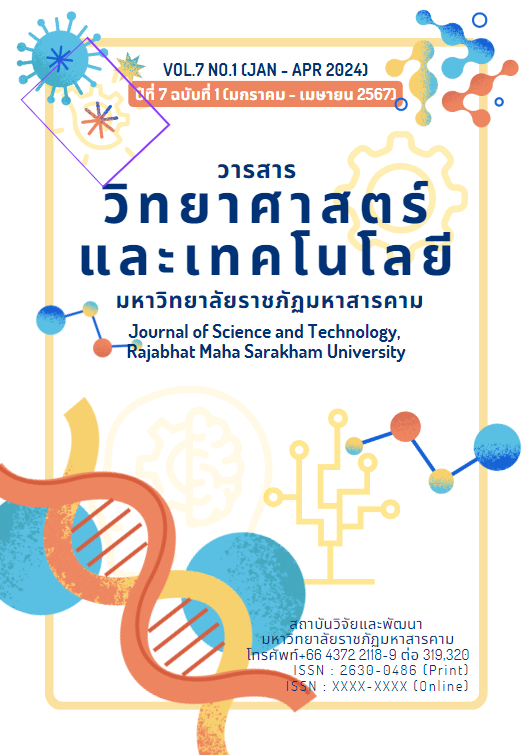A study of bacterial growth with age of bloodstain for forensic application
Keywords:
Age estimation, Bloodstain, Bacteria growth, Crime sceneAbstract
This research is a study of the relationship of bacteria growth in bloodstain with the age of the blood to use for the estimated time of the incident in forensic investigation. The experimental study was performed by comparison analysis of the bacteria counted number detected in the bloodstain from different conditions at varied duration. Blood samples were collected from a volunteer and dropped to the tested cement surface for 100 microliters and then stored in 3 conditions: indoor, outdoor and with ultraviolet source (UVC). Each test was left for 15 minutes, 30 minutes, 45 minutes, 1 hour, 2 hours, 4 hours, 8 hours, 1 day, 2 days, 3 days, 4 days, 5 days, 6 days, and 7 days after the blood was dropped. Then, numbers of bacteria were counted on the Plate Count Agar (PCA) medium using pour plate method. Data were examined and analyzed using the statistical tools of F-Test. The results revealed that the number of bacteria discovered from blood stains in indoor and natural outdoor environments did not differ substantially at the 0.05 level. When comparing the numbers of bacteria discovered under UV conditions, the results were significant at the 0.05 level.
References
Basu, D., Kulkami, R. (2014). Overview of blood components and their preparation. Indian Journal of Anaesthesia. 58(5): 529–537.
Bond, John W., Phil, D. (2007). Value of DNA Evidence in Detecting Crime. Journal of Forensic Sciences. 52(1): 128-136.
Coohill, T. P., & Sagripanti, J. L. (2008). Overview of the inactivation by 254 nm ultraviolet radiation of bacteria with particular relevance to biodefense. Photochemistry and photobiology, 84(5), 1084-1090.
De Gaetano, G. (2001). Historical overview of the role of platelets in hemostasis and thrombosis. haematologica, 86(4), 349-356.
Laohabutr, P. (2016). Estimation of the age of bloodstain on cloth by the method of image analysis. Veridian E-journal Science and Technology Silpakorn University. 4(4),65-77. (in Thai)
National Crime Prediction Center. (2022). White Paper on Crime and Justice 2022. Bangkok: The Office of Justice Affairs. (in Thai)
Ngamsamer, P. (2010). Age determination of blood stain by bacterial growth. Veridian E-Journal, Silapakorn University (Humanities, Social Sciences and arts). 4(1),819-838. (in Thai)
Pleethong, J. Sinloyma, P., Suthirawut, S. (2018). Age Estimation of Bloodstain by Microbiology Method. Suan Dusit Graduate School Academic Journal. 14(3), 1-14. (in Thai)
Saferstein, R. (2009). Forensic Science: From the Crime Scene to the Crime Lab (1st ed.). New Jersey: Pearson: Prentice Hall.



